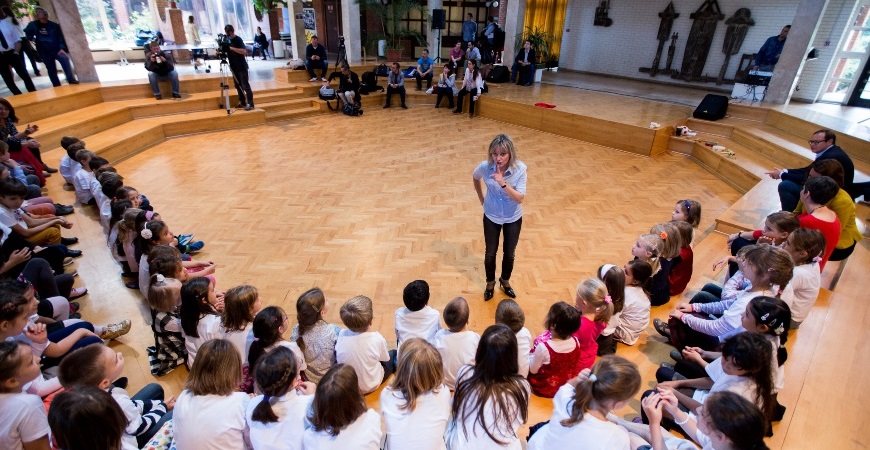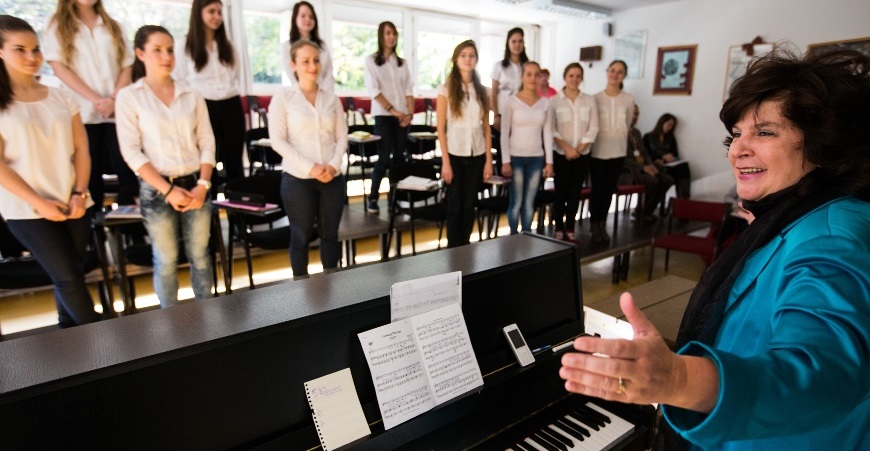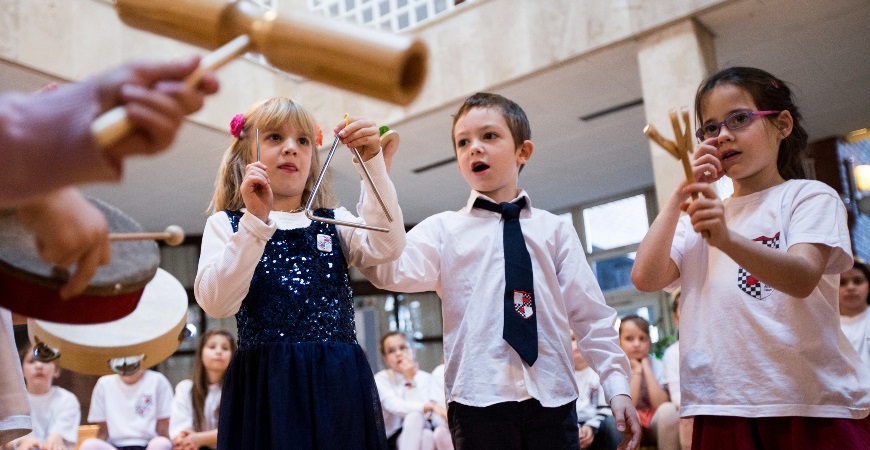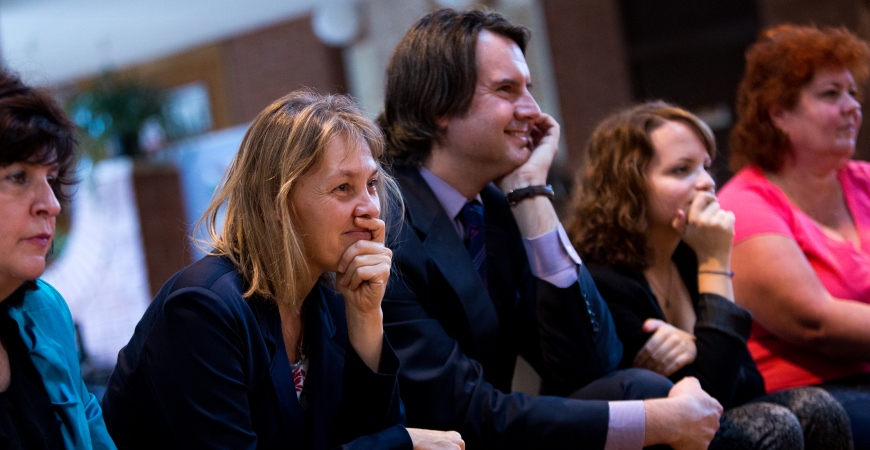The Kodály Method in the 21st Century
The Liszt Academy has entered into a strategic alliance with three Budapest educational establishments to bring new life to the world famous Kodály Method of teaching, as well as creating an exemplary model representing the full scale of Hungarian vocal and music public education. The schools are the Városmajor Secondary School, the Károly Kós Specialist Music and Singing Primary School and the Városmajor Street Kindergarten.
„What should be done? Singing and music should be taught in school not as a torture for students but as a joy, injecting a noble musical thirst for a lifetime" said Zoltán Kodály in 1929. Today, eight decades later, things have changed: the institutional structure of the world famous Hungarian educational system has been weakened, emphases in education have shifted, the continuity of music teaching has been broken, audiences who understand classical music have aged with too few replacing them, and fewer are entering this now difficult profession as musicians and teachers. Something does now need to be done, and this has been recognised by the leadership of the Liszt Academy. And from autumn 2014, it has actively been working to bring a practical rejuvenation to Zoltán Kodály's world famous teaching traditions.

The Liszt Ferenc Academy of Music is the flagship for Hungarian music and teaching and has entered a strategic partnership with three institutions in the capital – the Károly Kós Music and Singing Advanced Level Primary School, the Városmajor Street Kindergarten and the Városmajor Secondary School, and with the Liszt Academy's Kodály Institute acting in the role of midwife, the long range aim of the Városmajor model programme is nothing less than to give birth to a domestic and international centre of methodological excellence and a university college bearing the name of Kodály
The leading teachers of the Kodály Institute and the other institutions have worked out the school's curriculum, in the spirit of the National Core Curriculum (NAT in Hungarian). Classes of kindergarten children, and students from the first, third and seventh classes of the primary school, professionally supervised by the Liszt Academy Kodály Institute and with the active participation of the institution's teachers, will participate in high level musical activities. In these classes, the emphasis is less on theoretical knowledge and more on developing personality, and harmonically forming emotional and intellectual intelligence through active music activities. Creative play methods resting on fundamental teaching principles encourage the acceptance of others and joyful cooperation. They develop attention skills and concentration, and a sense for rhythm and metre within the framework of a communal experience. Music teaching techniques enriched with the possibility for a diversity of movement are allotted a key role in the activities, and besides singing which has so far taken centre stage, listening to music actively and developing creative skills also receive prominence. This is helped by progressive methods such as Kokas teaching, and the improvised ideas and exercises of János Gonda and László Sáry which can be integrated into the Kodály teaching system. Further support is provided by the digital teaching package, developed with the Kodály Institute, and computer applications facilitating the reading and writing of music.

The singing-music faculty has been operating in the Városmajor Secondary School for twenty-five years, directed by the Liszt and Bartók-Pásztory prize winning conductor Zsuzsanna Gráf, and it has now established itself as an internationally famous centre for Hungarian music teaching. Its towering standards are symbolised by the Hungarian and international renown of the Angelica Girl's Choir which is based here, as well as for the number of Hungarian musicians it produces and its role in encouraging generations of Hungarians who understand music, love it and actively pursue it throughout their lives. According to the plans, a five year training will commence in the school in September 2015 with independently functioning music and singing classes, in a college style system. The singing-music program is open to students from the provinces and neighbouring countries and besides the usual compulsory subjects, they will also be given intensive English language teaching. For those in year 9 to 12, besides the weekly three singing-music lessons, the students will also study music history in English.
For many years, the music teaching at the Károly Kós Singing-Music Advanced primary school has been directed by Mónika Mitók and Katalin Hraschek. In September 2014 they were joined in their teaching work by choir conductor and music teacher Edina Barabás, who for 20 years taught members of the Hungarian Radio Children's Choir, as well as by choir conductor and music teacher at the Kodály Institute Borbála Szirányi, who possesses great experience not only as a primary school teacher but has also been invited as a guest teacher to work abroad in colleges and universities. The year 7 class is taught by a young teacher, Árpád Tóth, who graduated from the Liszt Academy a few years ago. The curriculum of the music class now takes an interesting new direction: from the beginning of the current curriculum, the specialist musical activities are supplemented with quality English teaching. At the Városmajor Street Kindergarten, beginning in September, Edina Barabás will be directing musical activities for whole classes.

Following an invitational press conference and an introduction to the activities on October 20th 2014 at the Városmajor Secondary School, the President of the Liszt Academy, Andrea Vigh, spoke with the Hungarian news agency MTI. She stressed that one of the key elements of the programme is the integrated musical teaching that is continuous from nursery to matriculation. The other is the rejuvenation of the Kodály Method with music teaching software and mobile technology applications, as well as the more gradual introduction of movement and movement-based rhythmic exercises into the teaching methods. Andrea Vigh also stressed that music education generally develops concentration, memory and logic skills, as has been shown numerous times by brain researchers, so it is helpful to not just children with a good musical sense but also for their less musical fellow students who can also benefit from it. Indeed in therapeutic teaching, the curative effect of music has been applied with success. The Városmajor programme that was launched on September 1st, under the supervision of the Liszt Academy Kodály Institute, can create the foundations for a Hungarian and international methodological centre of knowledge, as well as the creation of a specialist college bearing Kodály's name. It could have an important effect in the whole country and abroad, added Andrea Vigh, the President of the Liszt Academy.

MTI/Zeneakademia.hu
Photos: Liszt Academy / Zoltán Tuba


